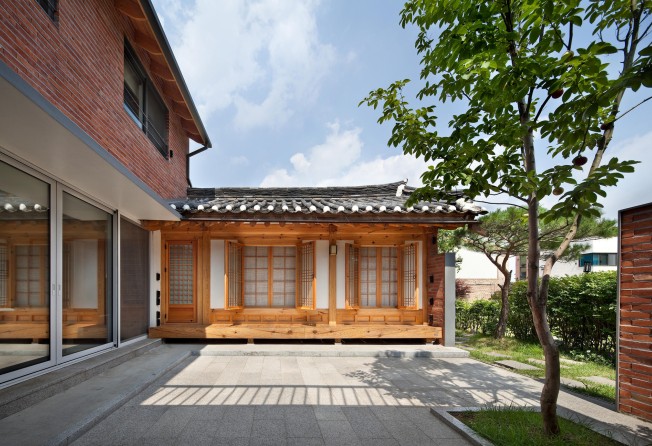Seoul preserves its personality in traditional urban architecture
Courtyard 'hanok' housing with tiled roofs and stucco exteriors resist the march of progress thanks to visual appeal and eco-friendliness

The South Korean wave of movies, television shows and pop music continues to wash around the world, promoting "brand Korea" on a tide not just of popular culture but of a growing interest in Korean language, cuisine and lifestyle. And, like the country's booming inbound tourism figures, this is all icing on the economics cake.
Less visible is a non-exportable, domestic-market component of the wave, helping Seoul and other cities such as Jeonju present their most fetching faces to the world.
As if realising - like countless other urban areas, almost too late - that what is shiny and new does not necessarily trump what is old, soundly constructed, visually appealing and eco-conscious, Seoul has to an extent resisted the march of "progress" by conserving some traditional single-storey Korean homes, or hanok, thereby averting the threat of yet another identikit, globalised skyline. Not that city hall, however, has always steered a universally lauded course.
Seoul's Bukchon district is famous for its traditional courtyard homes, defined by tiled roofs and stucco or brick exteriors.
Stone, wood and clay are the only construction materials used. More abstract components, integrated in accordance with the principles of baeanimsu, the equivalent of fung shui, are sunlight and wind, which help determine auspicious sites.
Natural forces or not, such urban hanok, many dating from as recently as the 1930s, owe their survival to the government's designating Bukchon a hanok-preservation district - despite objections from many residents who saw potential riches in selling out to developers. The Hanok Ordinance of 2002, incorporating tax breaks and repair subsidies for owners, aims to maintain the architectural beauty of traditional houses and improve their cultural value.
"We were deprived of hanok by wars and later by modernisation of the city," says architect Cho Jung-goo of Seoul's Guga Urban Architecture. Its renovated hanok in a wooded neighbourhood near Gye-dong is one of a dozen Seoul houses featured in Tuttle Publishing's Hanok: The Korean House, by Nani Park and Robert Fouser and photographer Lee Jong-keun.
" Hanok have begun to attract more attention because they are environmentally friendly," Cho says, "while they have also evolved as homes that reflect our current lifestyles. That evolution is a major trend in Korea."
No doubt it's also a relief, with the original hanoks having dated from the 14th century. But while today's exteriors may recall the architecture of earlier centuries, not least in the curved, tiled roofs, paper window screens, nail-free wooden frames and stone foundations, all usually allied to a south-facing aspect to ensure maximum sunlight for the living areas at the rear, the interiors tell a different story.
Those shown in the hanok selected by Park and her colleagues are found in expensive homes largely owned and restyled by members of the professional classes and reveal a taste for semi-basements (to allow increased space without falling foul of zoning restrictions); contemporary, designer bathrooms; elevated wooden tea rooms; glass-roofed patios; built-in cupboards; skylight windows; wall brackets for holding bicycles; and sunken gardens. And echoing Cho's "evolution' assertion is a commentary from the book that reads: "All-weather Western-style furniture illustrates how preservation-minded Koreans have embraced a mixture of old and new for modern living."
Consequently, Bukchon has ended up with what the book calls "mixed hanok", because that interior-exterior question has exercised many heritage stalwarts who believe that planning and redevelopment laws - which in the last three decades have swung wildly from too restrictive to too lenient, even permitting demolition and rebuilding - have spawned what professor of architecture Hyun Young-jo called "a distorted form of hanok".
"These newly built, so-called hanok have features - the roof, basically - but they're not really hanok," he says. "They don't have traditional views and shapes."
So what is authentic and what is ersatz? And to what extent does it matter?
From Fouser's introduction: "By the early 2000s the economy had recovered … and renovations in Bukchon began in earnest … the first wave caused controversy … preservationists were alarmed at the extent of the changes and complained that renovations went beyond what was necessary and, in some cases, equalled new construction."
Cho seems unconcerned about splitting such hairs. Focusing on "ordinary architecture related to life", Guga staff have stepped out about once a week, for 14 years, to explore Seoul's historical centre and record, with a view to future projects, how people live in the city.
And increasingly they are discovering mixed hanok - a "new genre", says Fouser, that "allows experimentation and, perhaps more important, expression of an owner's personality".